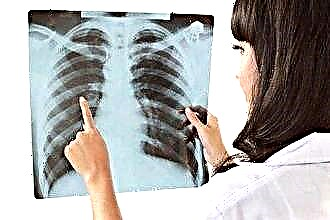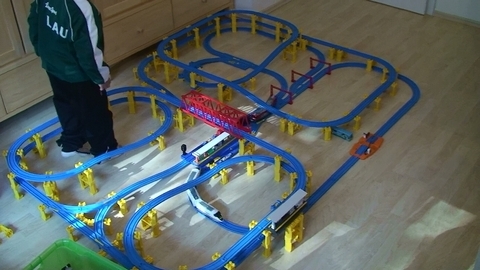 The mucous membrane of the child has a looser structure, which contributes to swelling. The lumen of the larynx has a narrow passage, which is also a predisposing factor for the development of the pathological process.
The mucous membrane of the child has a looser structure, which contributes to swelling. The lumen of the larynx has a narrow passage, which is also a predisposing factor for the development of the pathological process.
The larynx is involved in carrying oxygen to the lower respiratory tract, the lungs. Narrowing of the airway as a result of edema is a dangerous situation that needs urgent action. A swollen throat in a child can lead to breathing difficulties and suffocation. If medical assistance is not provided in a timely manner, the child may die.
Causes
Depending on the cause that caused the development of this condition, laryngeal edema can develop acutely or gradually. An acutely developed condition is more dangerous, since the child's body does not have time to adapt to functioning in conditions of insufficient oxygen supply. Lightning swelling of the larynx in a child can occur as a result of the following pathological conditions:
- allergy;
- ingress of a foreign body into the respiratory tract.
Acute development of edema is characteristic of severe inflammatory processes, acute laryngitis, as well as complications of acute infectious diseases:
- flu;
- diphtheria;
- scarlet fever;
- measles.
It is necessary to find out the cause of the development of laryngeal edema, since it is in this case that the maximum effect of therapeutic measures will be achieved.
Laryngeal edema stages
The symptomatology of laryngeal edema develops rapidly, sharply worsening the patient's condition, therefore, at the initial stage, all therapeutic actions should improve air permeability to the lungs, regardless of the cause. Correction of treatment is carried out later, after stopping the dangerous condition.
Edema of the larynx in its development goes through several stages, which is reflected in the conduct of therapeutic measures. The stage of compensation is characterized by the absence of respiratory disturbances. Clinical manifestations are consistent with the course of the disease. The patient may be disturbed by a dry cough, a sore throat, a change in the timbre of the voice. The existing swelling of the larynx, characteristic of various pathological processes, in the conduct of additional therapeutic  no activities needed.
no activities needed.
With incomplete compensation, the patient's condition worsens. Cough intensifies, shortness of breath appears, difficulty in breathing is noted, especially when inhaling. In this case, the auxiliary muscles are involved in the breathing process. The epigastric region, supraclavicular fossa and intercostal spaces are retracted. Inflation of the wings of the nose is noted. This stage requires urgent treatment. Otherwise, the disease will go into the stage of decompensation and subsequent asphyxia, which can be fatal.
Removal of a foreign body
Since the fulminant form of edema can be triggered by the ingress of a foreign body into the respiratory tract, removing it will help to quickly improve the situation. This situation is more common at home, so parents should try to remove the foreign body on their own, without waiting for the arrival of an ambulance.
Spasm and swelling of the larynx develop within a short time, and the well-being and health of the child will depend on the timely removal of a foreign object.
There are two ways to try to do this:
- Having tilted the child, knock on the back between the shoulder blades with sharp movements;
- It is necessary to lean the child with his back to you and cover his stomach with your hands. Making sharp squeezing movements, try to push the foreign object out of the respiratory tract using the force of intra-abdominal pressure.
If the measures are ineffective, it is necessary to carry out a tracheotomy, thereby providing air access to the lungs.
Allergy-related laryngospasm
In favor of the development of laryngospasm as a result of allergy, the child's history, the presence of atopic dermatitis, urticaria testifies. In children, the most common hazardous substances are food and medicines. The process is due to the development of a pathological antigen-antibody reaction and the production of a biologically active substance, histamine. In this regard, the use of antihistamines in the form of injection solutions of Pipolfen, Suprastin, Tavegil will help to quickly improve the situation.
In severe cases, corticosteroid drugs, administered intramuscularly or by drip, should be added to the treatment. The greatest efficiency in this case is achieved with the combined use of antihistamines, corticosteroids and diuretics, which help to remove fluid from the body and reduce swelling.
Help with inflammatory processes
The cause of the development of acute laryngeal edema in children is often inflammatory processes caused by the effects of viruses and bacteria. The complication of influenza, measles, scarlet fever and the development of laryngeal edema is evidenced by a deterioration in the general condition, increased barking cough, the appearance of shortness of breath, shortness of breath. The child becomes restless, the participation of the muscles in the breathing process is noted.
Since the cry, the anxiety of the patient contributes even more to laryngospasm and worsening of the condition, then when such signs appear, the child must be reassured. Before the arrival of an ambulance, parents must be with the child at all times. It is necessary to provide access to clean air, ventilation of the room.
Since the child's condition can be aggravated not only by swelling of the larynx, but also by the accumulation of mucus and sputum in the respiratory tract, procedures that promote coughing will be relevant. The moist warm air in the room will help to facilitate the breathing process. The baby can be taken to the bathroom with hot water turned on and stand there for a few minutes. Warm alkaline drink, milk with soda, mineral water "Borjomi" promotes sputum discharge.
Compresses on the larynx area and a hot foot bath can help reduce swelling. Useful in this situation are vasoconstrictors and antispasmodics of local action, aerosols Solutan, Berodual. The use of antihistamines and corticosteroids also helps to relieve edema.
In the event that, after several hours, no positive dynamics is noted, the child is shown tracheal intubation.
The child should be hospitalized in an infectious diseases or therapeutic department that has the ability to carry out resuscitation measures.
Urgent action for diphtheria
 In addition to childhood infections and ARVI, a child's throat swelling also develops against the background of diphtheria. Diphtheria croup can pierce locally, affecting only the larynx, or have a widespread form in which the trachea, bronchi, oropharynx, and nose are involved in the process. The presence of croup is characterized by a triad of symptoms:
In addition to childhood infections and ARVI, a child's throat swelling also develops against the background of diphtheria. Diphtheria croup can pierce locally, affecting only the larynx, or have a widespread form in which the trachea, bronchi, oropharynx, and nose are involved in the process. The presence of croup is characterized by a triad of symptoms:
- barking cough;
- hoarseness of voice;
- noisy breathing.
Diphtheria in its development passes the stage of dysphonia, when the voice becomes silent, stenotic, in which laryngospasm develops, and asphyxia.Therapeutic measures include the use of aminophylline, diuretics, corticosteroid drugs, which can be used in the form of drip or injection solutions, as well as inhalation. An obligatory method of treatment is the introduction of an anti-diphtheria serum.
With any mechanism of laryngospasm development, an increase in hypoxia, the child must be hospitalized in the intensive care unit, where oxygen will be administered through a nasal catheter. In case of ineffectiveness of the measures taken and the continuing development of respiratory failure, tracheal intubation should be performed.
If croup is widespread, artificial ventilation can be performed.



